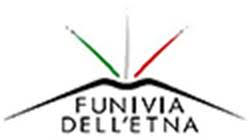Sicily's most prominent landmark is Europe's largest live volcano and one of the world's most active. At 3323m it literally towers over the Ionian Coast, dwarfing everything beneath it; its smoking peak is visible from almost everywhere on this side of the island, and is a heart-stirring (and sometimes heart-stopping!) sight. As a symbol of power, creation and destruction, it's hard to beat, and the effect of this extraordinary volcano should never be underestimated. Since 1987 the Etna Volcano and its slopes have been part of a national park, the Parco Naturale dell'Etna, a territory that encompasses a fascinatingly varied natural environment: from the severe, almost surreal summit, with its breathtaking panoramas, to desert of lava and alpine forests.
Triggered by a combination of volcanic and regional tectonic activity more than half a million years ago, a number of eruptive centres appeared off the east coast of Sicily. The most recent phase of volcanism, about 35,000 years ago, created the present-day stratovolcano known as Etna. In ancient times Etna's summit was frequently lit up by spectacular pyrotechnic displays. Not surprisingly, the eruptions featured in some very early writing. The classical world saw the volcano in mythological terms as the home of the god Plutone and of the Titans who predated Zeus and rebelled against him. In the 18th century BC Homer mentioned Etna in his story of Ulysses (Odysseus) and the Cyclops, and in Prometheus, Aeschylus describes Etna as a 'column holding up the sky', with the giant Tifone (Typhoon) at its base. Recorded history is littered with eruptions, including major ones in 475 BC, AD 1169, 1329 and 1381, all of which saw molten rock flow right down to the sea. The most devastating eruption occurred in 1669 and lasted 122 days. A massive river of lava poured down Etna's southern slope, destroying 16 towns and engulfing a good part of Catania. The first documented visitor to Etna was in 1493: Pietro Bembo, who wrote De Aetna, telling of his adventures. This encouraged an influx of English, German, French, Dutch and Danish travellers. In 1773 English physicist, Patrick Brydone, published his Tour Through Sicily & Malta, and his lyrical descriptions of the ascent to the crater inspired many aristocrats to visit. In more modern times, Etna has claimed its faire share of victims, despite the fact that it is monitored by 120 seismic activity stations and is under constant satellite surveillance. In 1971 an eruption destroyed the observatory at the summit, and another in 1983 finished off the old cable car and tourist centre. Nine people died in an explosion at the southeastern crater 1n 1979, and two died and 10 were injured in an explosion at the same crater in 1987. In 1992 a stream of lava pouring from a fissure in the southeastern slope threatened to engulf the town of Zafferana Etnea. The town was saved when the Italian Air Force dropped a pile of breeze blocks in the lava's path. In 2001-02, Mt Etna's most spectacular explosions in 40 years caused immense damage to the infrastructure on the southern side of the mountain.
The volcano is made up of four summit craters and is surrounded by 200 major and secondary cones ditting etna's flanks. Measuring roughly 7km by 5km, the Valle del Bove, a depression on the eastern side of Etna, is a caldera formed after a cone collapsed several thousand years ago.
